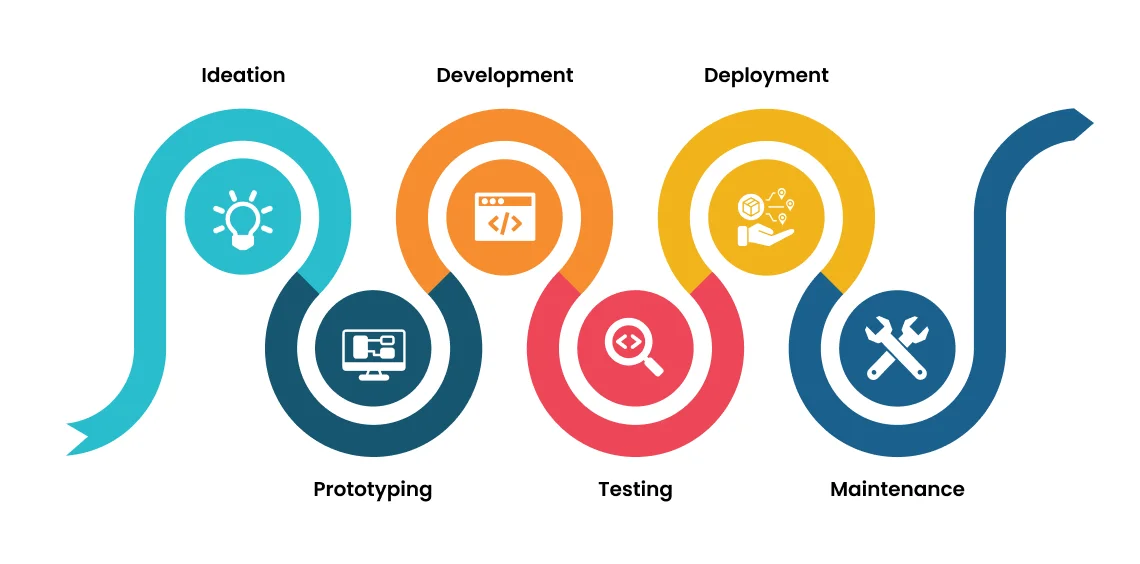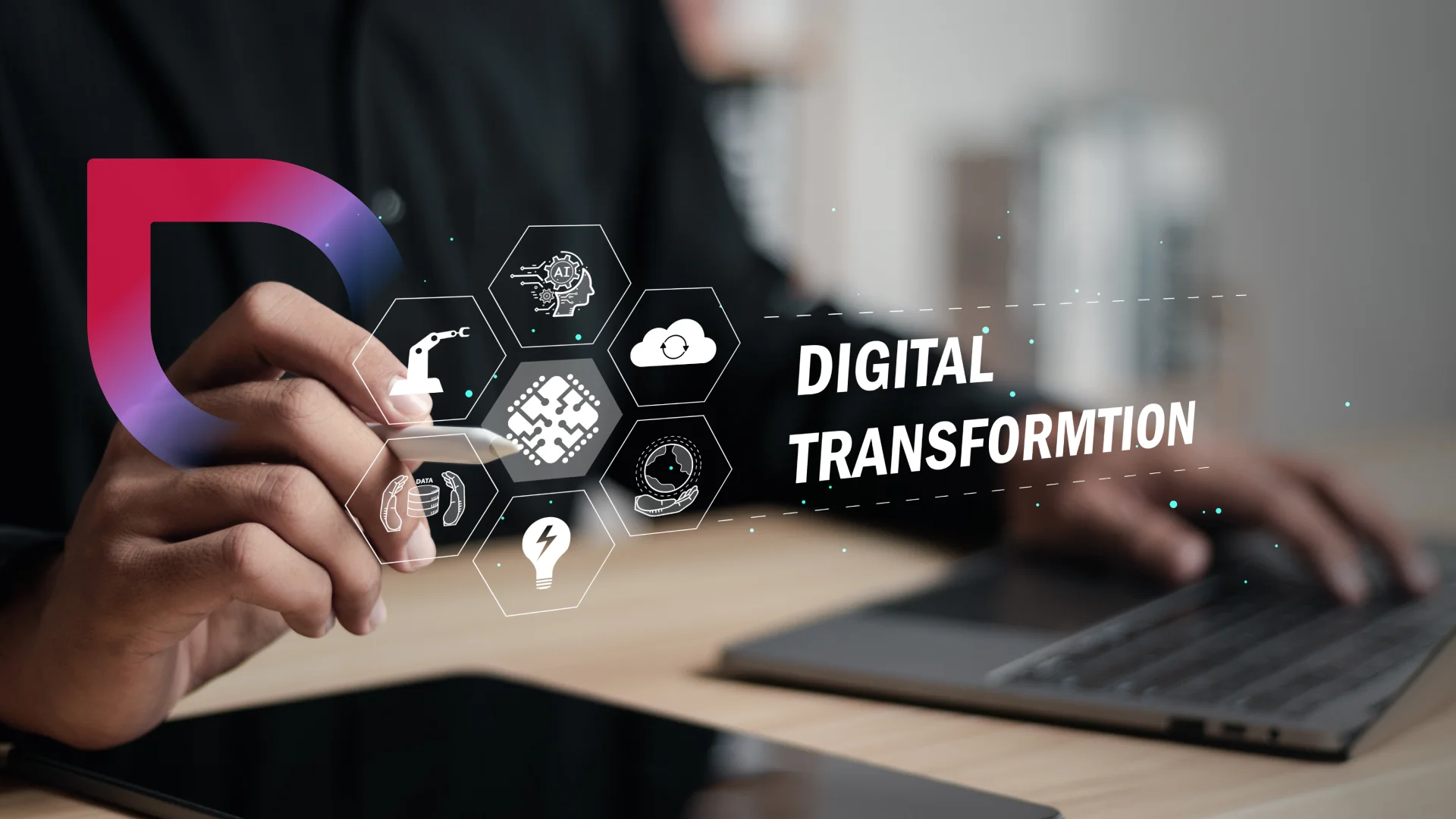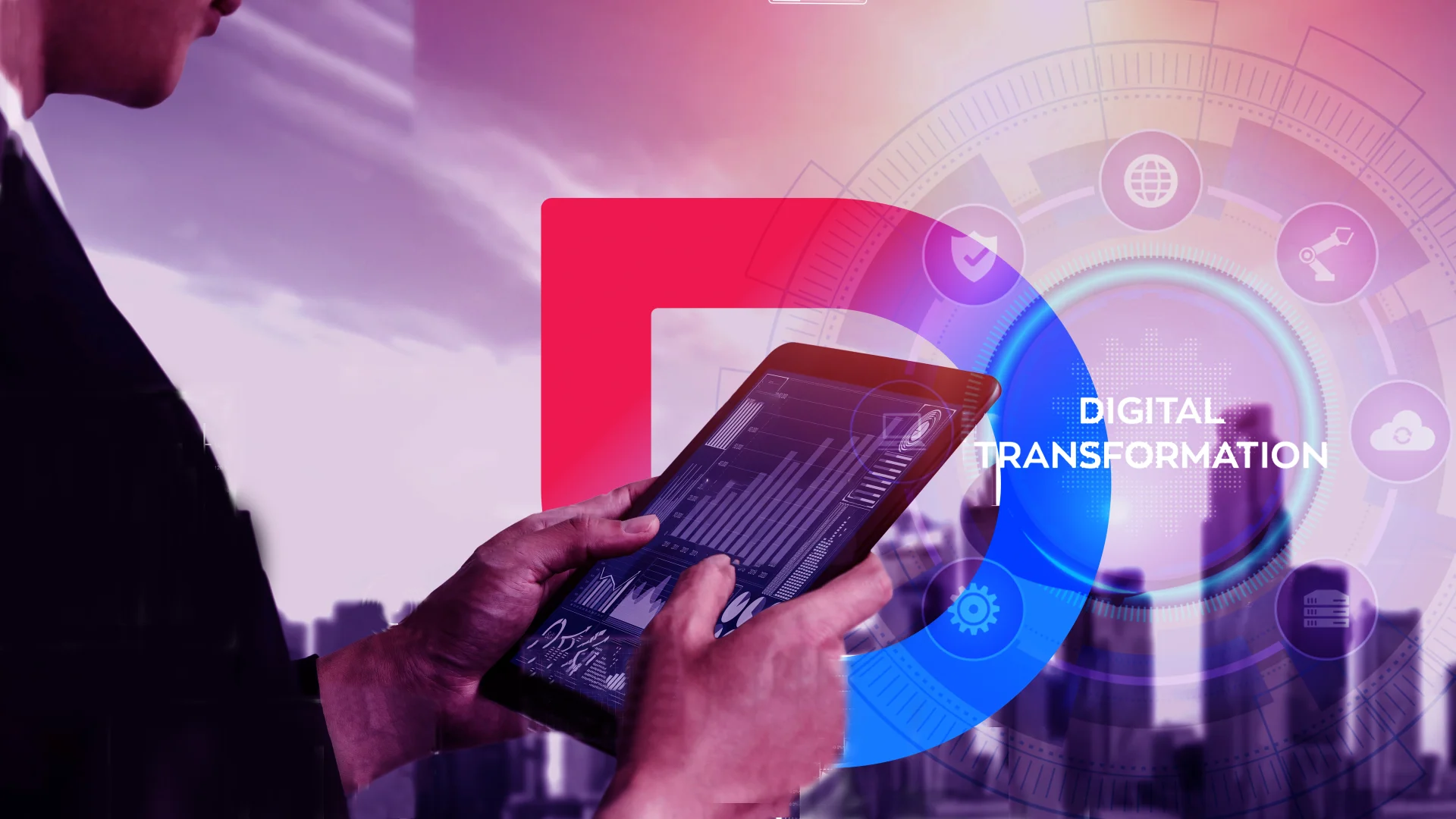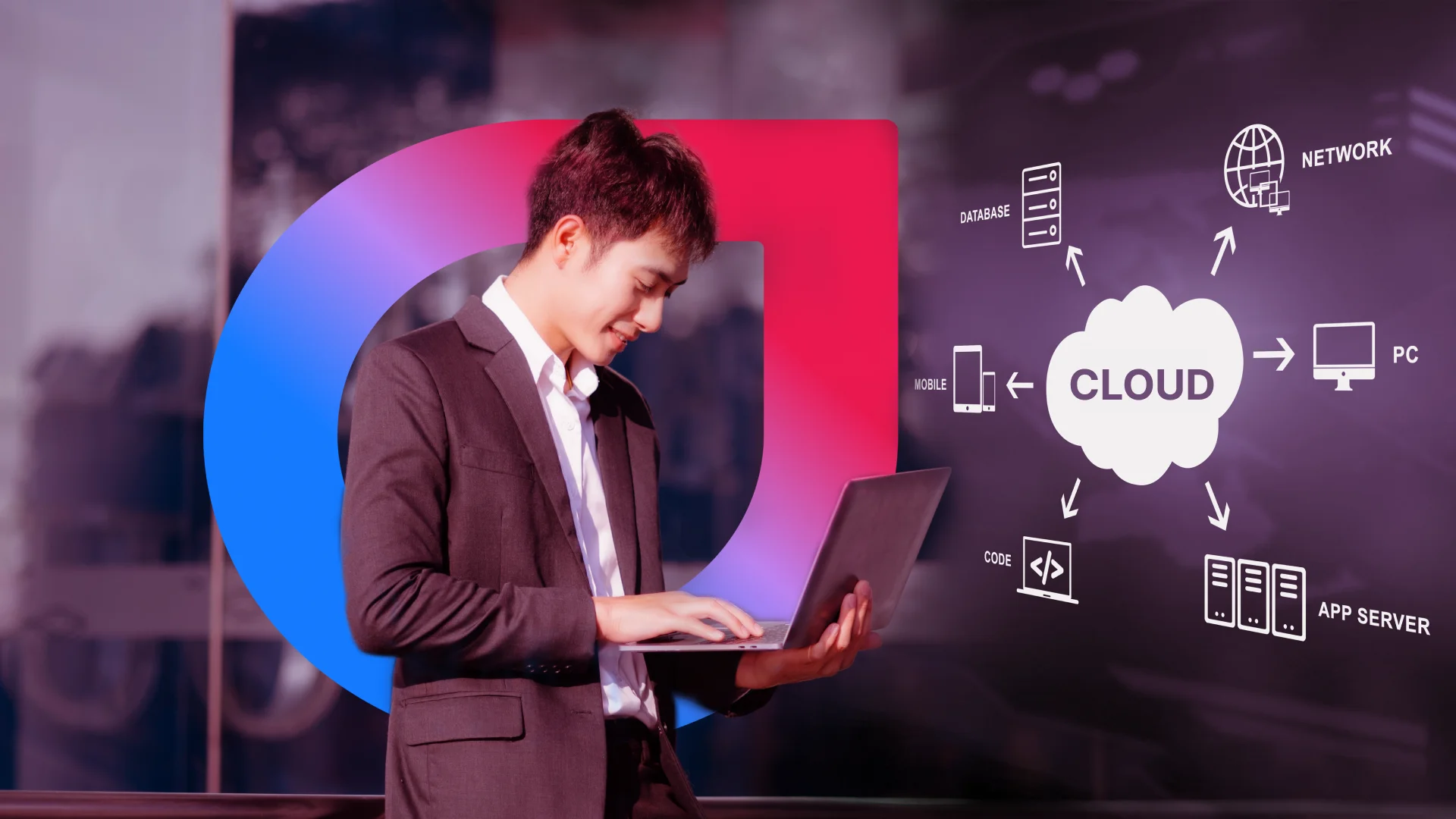What Are the 7 Crucial Stages for Navigating Full Cycle Product Development?
- Business
- December 18, 2023
Do you have a brilliant idea for a product that could revolutionize the way people live, work, or play? Are you excited and enthusiastic to build something incredible but don’t know how to turn that spark of inspiration into a real product that people could buy and use? Well, a full-cycle product development process is what you need to execute the idea and launch your product successfully in the market.
However, the process is not simple and has complicated phases that require expert attention and specific skill sets. Even according to research, 75% to 95% of products fail due to not being market-fit, poor design, development, execution, and launch planning. In this heap, you may succeed if you are following the 7 stages of product development.
The process has 7 key stages, each with its unique set of tasks and goals. In this blog, we will explain these crucial steps of the product development lifecycle and help you understand how ideas come to life. In this blog, let us help you understand this process.
What is Full Cycle Product Development?
Full cycle product development is a comprehensive approach that encompasses all stages of pre and post product development. The process includes idea generation, market research, designing and prototyping, development, testing, deployment and maintenance.
The product development process ensures the creation, refinement, and testing of products while helping them adapt to market changes and meet customer needs. It leads to successful production, innovation, and growth while ensuring high quality, usability, and reliability.
Full Cycle Product Development Vs Product Development, What’s the Difference?
Full-cycle product development and product development are related concepts, both responsible for building and bringing a product to the market. However, there are subtle differences between both of them.
For example, product development refers to the process of designing, creating, and refining a new product or making improvements to the existing one. It mainly focuses on production-related activities, like prototyping, design and development.
On the other hand, full-cycle product development holds accountability for the entire process, from initial concept to testing, launching, and maintenance. It follows a comprehensive approach to ensure the product reaches the market, serves customers well, and has a decent life cycle.
Stages of Full Cycle Product Development
The full cycle product development process is where the product goes through 7 stages that work as a structured framework and bring a product from concept to market and beyond. These stages are as follows:

1. Idea Generation and Conceptualization
The idea generation is the beginning of the process where owners think of ideas and decide which product they want to create. You can see it as a brainstorming phase where creative thinking takes center stage. In this phase, you need to think about problems people are struggling with and base your product around the solutions.
Look at the market trends and demand to find out what could make people’s lives easier or better. Once you have a rough idea, start refining them. You can conduct market research and think of beneficial features your product could have and the main highlights of it. The process is similar to creating a rough story draft in mind before putting it on paper.
During this phase, you should not dismiss any idea too quickly, even if it seems less appealing at first. Finding and understanding your target audience is another crucial aspect of the stage. So, try to understand user preferences and requirements.
Ask yourself these questions:
- Who will benefit from your product?
- What your target audience likes and dislikes the most?
- How can your product fit into their lives and simplify it?
Try to find answers to these questions and design your product accordingly. Also, discuss it with those around you to seek guidance and take feedback. Proceed once you choose the best idea for your product.
2. Research & Planning
Start this stage with extensive market research and gather information about the industry, current market trends, and consumer preferences. Analyze the collected data to know which products are popular and what areas have room for innovation, and identify opportunities and challenges in them.
Also, study existing products that are similar to the one they plan to develop. Evaluate competitors’ strengths and weaknesses to find ways to differentiate their products and collect data on potential user needs and pain points of existing products.
You can also conduct surveys and interviews, asking people what type of products or software they’d like to use before developing one. Once your concept is in place, consider its technical constraints, cost implications, and required resources. Also, create a timeline, define milestones, and set development goals.
3. Prototyping & Designing
In this stage, refine the product concept, add finer details, and make decisions about how the product will look, feel, and function. Create a digital prototype and test its ideas and concepts. It will allow you to see how the product might work, what are its flaws, and what improvement it needs before development.
After building the prototype, gather feedback from potential users. Usability testing helps recognize usability issues, preferences, and design flaws. Based on the feedback, make adjustments and improvements to the prototype, refining it further.
Create technical documentation, including everything from designs, drawings, and development requirements to product features and specifications. Also, estimate the budget for design, development, testing, launching, maintenance, etc., before going ahead with the development process.
Also read: Product Design vs UX Design: The Detailed Comparison
4. Product Development
In this stage, developers take the refined product concept and create precise blueprints or schematics. This approach helps them understand how each component will fit together and function within the product.
Before developing a full-fledged product, you will have to create an MVP (Minimum Viable Product) with core features and launch it in the market to test the market fit and user response.
After getting the product analytics report you gather the points required to fix the product that can fit into the market and modern users would want to use. This market-fit product version is the full-fledged one that helps you launch your product with confidence.
Of course, this stage contains many code changes and collaborations, which can be taken care of using version control systems like Git. These systems track code changes and allow developers to work on different aspects of the product simultaneously.
But before launching the product, you need to ensure the product build quality from many perspectives, which will be taken care of by the comprehensive product testing & quality assurance standards.
5. Quality Testing
The stage focuses on product testing for quality assurance. It assesses the product functionality, quality, performance, and overall user experience. The primary goal of this step is to ensure the product meets or exceeds the specified requirements and functions as intended.
You need to write tests to check uptight functionality, performance, usability, compatibility, security, accessibility, user acceptance, compliance, regulatory, etc. These tests help to identify potential software issues and fix them during the development stage to avoid post-product launch scenarios.
6. Product Deployment
The product deployment stage makes the product available to end-users. The stage includes the planning, preparation, and execution steps required to release the digital product for use.
For the product deployment, bundle the necessary files and resources into an installable package in the format of an installer, executable file, or container image.
At first, the product is deployed in the staging environment for the developers to check the product before final launching and adjust it as per user requirements. After all confirmation about product market-fit, developers publish the product in its respective platforms for users to access and install it to utilize for their needs.
7. Maintenance and Upgradation
For routine maintenance, you have to perform regularly scheduled tasks that cross-check the product’s continued functionality and reliability. You have to identify and fix bugs or glitches that may emerge over time. Optimize performance whenever data or user load increases.
Apply security patches and updates to protect against potential security threats and vulnerabilities. Regularly backup user data to prevent data loss in case of sudden crash or emergency.
Update the product according to market trends, add new features, or improve existing ones to ensure the software remains compatible with new operating systems, browsers, or hardware.
Also read: Software Product Development – A Planning Guide for Startups
Notable Advantages of Investing in Full Cycle Product Development
A wise investment in full cycle product development offers many benefits that can make the launch and business successful. Here are some of the key benefits backing up the claim.
Clarity
Product development life cycle follows a straightforward approach and helps you develop a clear vision and a well-defined strategy for the product, aligning it with business goals and market needs. It helps you find key product objectives and issues that your product addresses for the users. A comprehensive vision includes long-term growth goals and aligns them with the company’s mission and values.
Market Relevance
By conducting market analysis and continuously gathering feedback from customers, you can ensure its market relevance, competitiveness, quality, and performance. This analysis reduces the risk of resource investment in a product that fails to adapt to the current landscape and stands by user expectations.
Efficient Resource Allocation
It supports better resource planning and allocation, reducing wastage and unnecessary consumption. You can allocate resources based on the different stages of the product’s lifecycle, resource planning, priortization, budget optimization, risk assessment, and manpower allotment.
Enhanced Product Quality
The process focuses on testing and ensures quality control at every stage, promoting the development of high-end products. This quality helps owners foster trust and long-term relationships with users, reducing the risk of issues or defects and creating a product that offers superior user experience.
Dedicated Customer Support
Full product development life cycle process provides comprehensive and responsive assistance to users before, during, and after interaction with the product. It offers various support channels and self-help resources, addresses user inquiries, troubleshoots issues, and resolves problems promptly.
Continuous Improvement
The process involves a commitment to ongoing learning and adaptation based on user feedback, market dynamics, and emerging technologies. It helps you recognize areas for improvement related to user experience, product usability, sales, marketing, maintenance, upgrades, and lifecycle management.
By embracing continuous improvement, product owners can stay agile, responsive to changing circumstances, and aligned with evolving user needs.
Adaptability
The process expands the product’s capacity to plan and implement strategies that yield positive results. Your product adapts according to changing user demands, market competition, and unforeseen challenges, embracing new ideas, emerging technologies, and methodologies.
This flexibility ensures that the product remains aligned with its vision and objectives while staying resilient in a rapidly changing digital landscape. Adaptability empowers product owners to make informed decisions and seize opportunities, ultimately contributing to long-term success.
Sustainability and Compliance
Full cycle product development ensures compliance according to rules, and compliance regulations. It helps in reducing negative impacts and potential liabilities. So, you can anticipate the risk factors, address pain points, and stand by user expectations.
It contributes to the product’s long-term viability, reduces potential liabilities, and aligns the product with ethical and legal standards.
Competitive Advantages
A well-defined process differentiates your product from other competitors in the market and helps you gain a favorable position over them. These advantages can be attained by focusing on innovation, quality, cost-efficiency, unique features, and exceptional customer service.
It also supports understanding market dimensions, target audience, and opportunities identification. The competitive advantage of this process attracts customers and increases their retention rate, leading to more market share and profitability.
Full-cycle product development follows a strategic approach that leads to better product quality, adaptability, and long-term success. It promotes thorough planning, risk management, and a user-centric approach, ultimately resulting in a product that meets user needs, complies with regulations, and remains competitive in the market.
Things to Consider While Choosing an Organization for Full Cycle Product Development
Product development lifecycle is a complicated and challenging process with various technical issues coming at different stages. So, you must stay careful while hiring the organization to hand over your project. Here are tips to keep in mind while making the choice.
- Evaluate the expertise in your industry and the specific type of product you want to develop. Review their portfolio to see if they have successfully delivered similar projects in the past or not. Take the client references and speak to their previous clients to validate the company’s experience.
- Shortage of resources, skilled workforce, and access to required tools may impede the process and lead to technical setbacks. Hence, make sure your chosen organization has enough resources to deploy the product with quality.
- Rushing through development phases without a proper discussion and planning can cause issues over time, complicating product development, maintenance, and upgradation. So, take your time to go through the process and set realistic milestones.
- Poorly designed products may experience performance bottlenecks and downtime during high-user activity periods. Ask your company to test it properly and understand its project management methodologies and development strategies and how they will apply them to your project.
- Security can be a major concern, especially while dealing with different data formats, protocols, or authentication methods. Therefore, enquire about the organization’s quality assurance and testing process.
To address these technical challenges effectively, you must hire a skilled development team to full life cycle product development. Experts will follow the well-structured process and use holistic approaches to develop the product with high-end features. They will keep it updated using the industry’s best practices and mitigate risks throughout the process.

Partner With MindInventory to Get Qualitative Full Cycle Product Development Service
MindInventory is a perfect choice to get a full cycle product development service. Our expert team has the collective knowledge to navigate complex challenges, anticipate and mitigate risks, and consistently produce high-quality products.
They use agile methodologies and industry best practices to ensure efficient development, high-quality output, better risk management, and uptight security. They pivot the approach according to changing project requirements, technology, and market dynamics.
We possess the efficiency and adaptability required to meet project goals and deadlines while maintaining a commitment to user-centric design, regulatory compliance, and continuous improvement.













